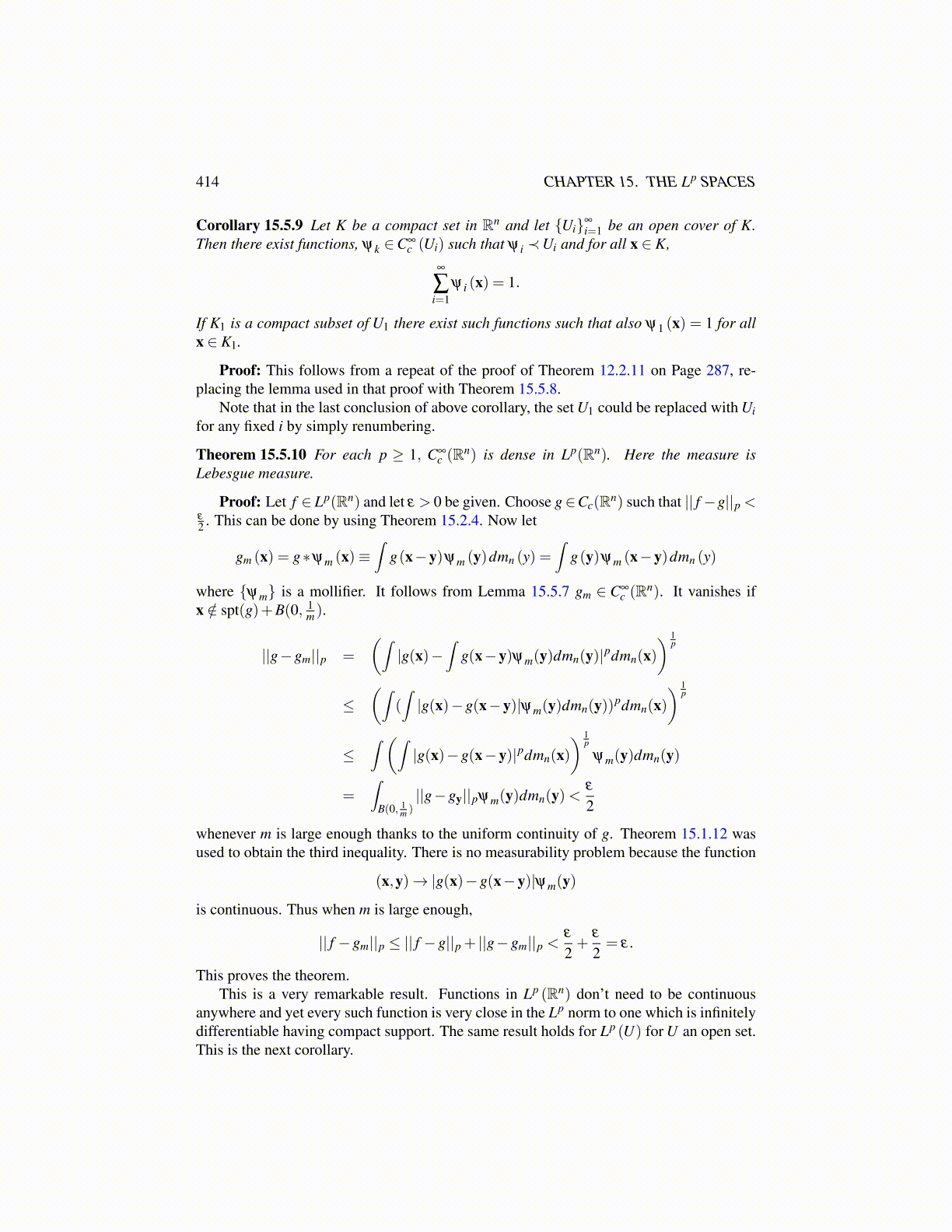
414 CHAPTER 15. THE Lp SPACES
Corollary 15.5.9 Let K be a compact set in Rn and let {Ui}∞
i=1 be an open cover of K.Then there exist functions, ψk ∈C∞
c (Ui) such that ψ i ≺Ui and for all x ∈ K,∞
∑i=1
ψ i (x) = 1.
If K1 is a compact subset of U1 there exist such functions such that also ψ1 (x) = 1 for allx ∈ K1.
Proof: This follows from a repeat of the proof of Theorem 12.2.11 on Page 287, re-placing the lemma used in that proof with Theorem 15.5.8.
Note that in the last conclusion of above corollary, the set U1 could be replaced with Uifor any fixed i by simply renumbering.
Theorem 15.5.10 For each p ≥ 1, C∞c (Rn) is dense in Lp(Rn). Here the measure is
Lebesgue measure.
Proof: Let f ∈ Lp(Rn) and let ε > 0 be given. Choose g∈Cc(Rn) such that || f −g||p <ε
2 . This can be done by using Theorem 15.2.4. Now let
gm (x) = g∗ψm (x)≡∫
g(x−y)ψm (y)dmn (y) =∫
g(y)ψm (x−y)dmn (y)
where {ψm} is a mollifier. It follows from Lemma 15.5.7 gm ∈ C∞c (Rn). It vanishes if
x /∈ spt(g)+B(0, 1m ).
||g−gm||p =
(∫|g(x)−
∫g(x−y)ψm(y)dmn(y)|pdmn(x)
) 1p
≤(∫
(∫|g(x)−g(x−y)|ψm(y)dmn(y))pdmn(x)
) 1p
≤∫ (∫
|g(x)−g(x−y)|pdmn(x)) 1
p
ψm(y)dmn(y)
=∫
B(0, 1m )||g−gy||pψm(y)dmn(y)<
ε
2
whenever m is large enough thanks to the uniform continuity of g. Theorem 15.1.12 wasused to obtain the third inequality. There is no measurability problem because the function
(x,y)→ |g(x)−g(x−y)|ψm(y)
is continuous. Thus when m is large enough,
|| f −gm||p ≤ || f −g||p + ||g−gm||p <ε
2+
ε
2= ε .
This proves the theorem.This is a very remarkable result. Functions in Lp (Rn) don’t need to be continuous
anywhere and yet every such function is very close in the Lp norm to one which is infinitelydifferentiable having compact support. The same result holds for Lp (U) for U an open set.This is the next corollary.